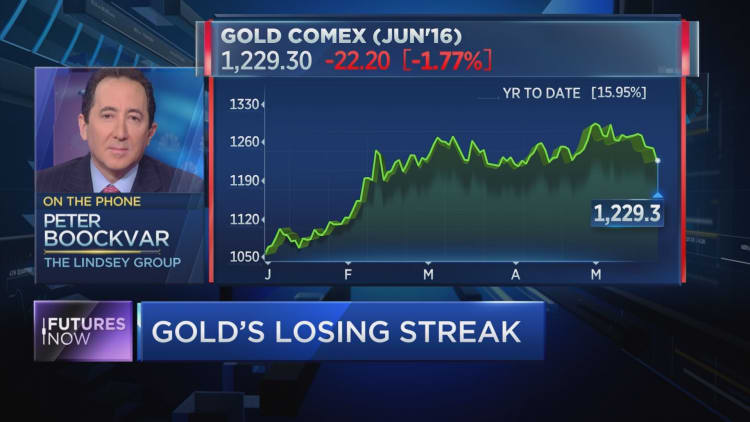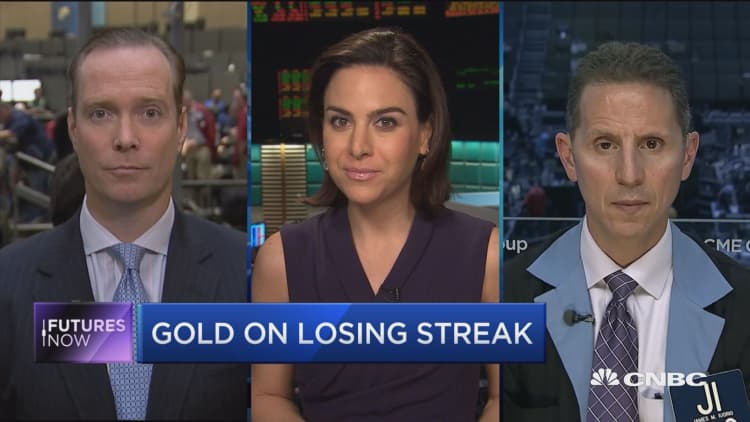


Gold's losing streak continued on Tuesday as the precious metal tumbled to its lowest level in more than five weeks. However, one of Wall Street's most closely followed analysts says the dip presents a prime buying opportunity and that bears are reading the market incorrectly.
"This is just the beginning of a new bull market in the metals," the Lindsey Group's chief market analyst Peter Boockvar told CNBC's "Futures Now" on Tuesday.
Ultimately, Boockvar believes that the 2011 highs of around $1,900 for gold are not only reachable, but surpassable, as reasoned that bull markets historically exceed the previous bull market peak at some point.
As Boockvar sees it, it's just a matter of when.
"In order to be bearish on gold, you have to believe that the Fed is going to embark on 100 to 200 basis points of hikes over the next couple of years, which I think is completely unrealistic," added Boockvar. "This is an ideal opportunity for those who have not gotten in."
Read MoreWhen's it safe to buy gold? After the Fed hikes, Gartman says
Citing the relative-strength index, Boockvar said that gold is the most oversold it has been since mid-December. He also added that global interest rates have given trillions of dollars' worth of sovereign bonds negative yield. Coupled with rising Fed rates, this development would theoretically provide gold investors with positive carry on gold. The precious metal is in the midst of its longest losing streak since November 2015.
For additional context, Boockvar highlighted the mid-2000s, when the Fed raised the Federal funds rate from 1 percent to 5 percent. During that time, gold went from $400 to $700. The analyst also cited the start of 2016, when Bank of Japan Governor Haruhiko Kuroda adopted negative interest rates. However, the move failed to help the nation achieve stability in its currency.
"The market acted in contradiction to what he expected," said Boockvar of Kuroda. "This was the beginning of the end of central banks' influence on markets. That's one thing that was a major factor in the gold bear market that began in 2011: an infatuation of faith in central banks, notably the Fed."
Now, Boockvar believes that notion has changed drastically.
"The growing likelihood of another rate hike should be a glaring technical sign to any tape-watcher," reasoned Boockvar in his coverage. "I don't believe the dollar breaks out higher on another rate hike, and I therefore remain bullish on gold and silver and other commodities."



